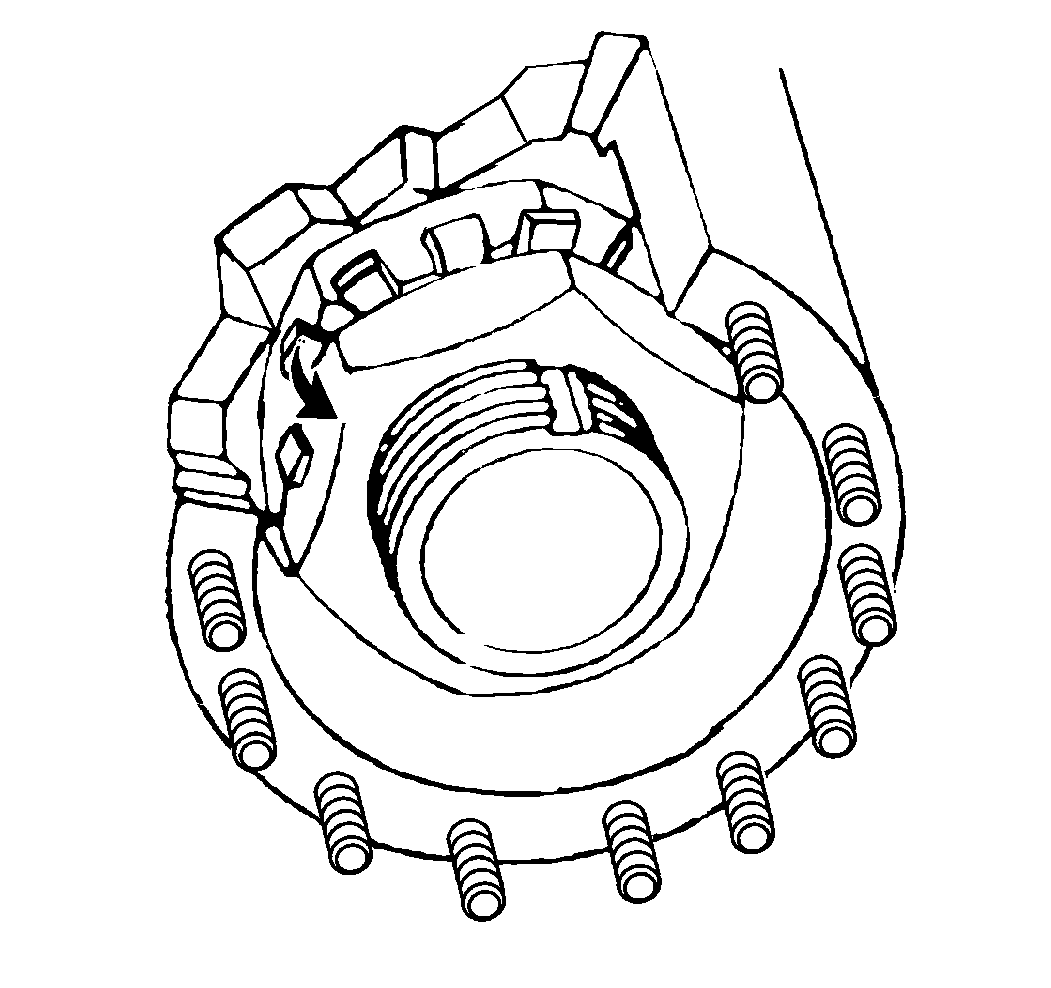Removal Procedure
- Remove the axle shafts. Refer to Rear Axle Shaft and/or Gasket Replacement .
- Use a pry bar in order to move the tire assembly up and down. Observe the following notes:
- Remove the rear wheel bearing outer adjust nut and the rear wheel bearing adjust nut lock.
- Loosen the rear wheel bearing inner adjust nut.
- Rotate the rear tire and the wheel assembly.
- Back off the rear wheel bearing inner adjust 60-90 degrees (1/6 to 1/4 turn).
| • | If the rear wheel bearings are properly adjusted, the rear wheel bearing end play should be within 0.025-0.178 mm (0.001-0.007 in). |
| • | The movement of the rear wheel hub in relation to the backing plate or spider assembly will be barely noticeable and the rear wheel will turn freely. |
| • | If the adjustment is within specification, continue the removal procedure. |
| • | If the movement is too much, adjust the rear wheel bearings using all of the following steps. |
Notice: Use the correct fastener in the correct location. Replacement fasteners must be the correct part number for that application. Fasteners requiring replacement or fasteners requiring the use of thread locking compound or sealant are identified in the service procedure. Do not use paints, lubricants, or corrosion inhibitors on fasteners or fastener joint surfaces unless specified. These coatings affect fastener torque and joint clamping force and may damage the fastener. Use the correct tightening sequence and specifications when installing fasteners in order to avoid damage to parts and systems.
Important: Rotate the rear tire and the wheel assembly while tightening the rear wheel bearing inner adjust nut in order to ensure proper seating of the rear wheel bearings.
Tighten
Tighten the rear wheel bearing inner adjust nut to 68 N·m
(50 lb ft).

Installation Procedure
- Install the rear wheel bearing adjust nut lock.
- Install the rear wheel bearing outer adjust nut.
- Bend one tang of the rear wheel bearing adjust nut lock over the flat of each rear wheel bearing adjust nut.
- Lower the rear axle housing.
- Install the rear axle shafts. Refer to Rear Axle Shaft and/or Gasket Replacement .
Notice: Use the correct fastener in the correct location. Replacement fasteners must be the correct part number for that application. Fasteners requiring replacement or fasteners requiring the use of thread locking compound or sealant are identified in the service procedure. Do not use paints, lubricants, or corrosion inhibitors on fasteners or fastener joint surfaces unless specified. These coatings affect fastener torque and joint clamping force and may damage the fastener. Use the correct tightening sequence and specifications when installing fasteners in order to avoid damage to parts and systems.
Tighten
Tighten the rear wheel bearing outer adjust nut to 169 N·m
(125 lb ft).

